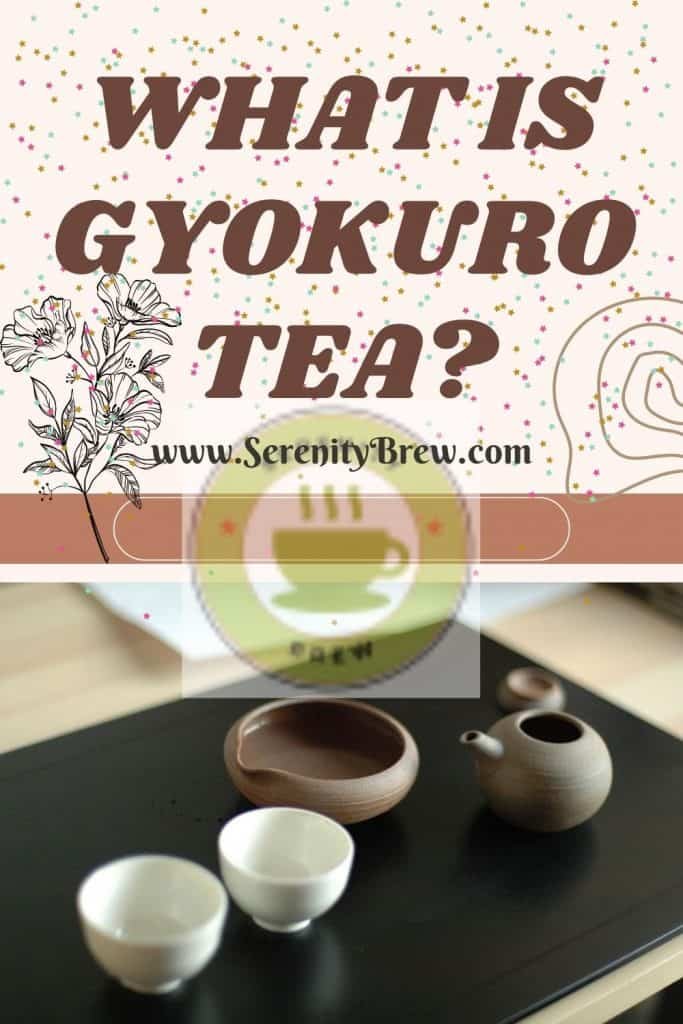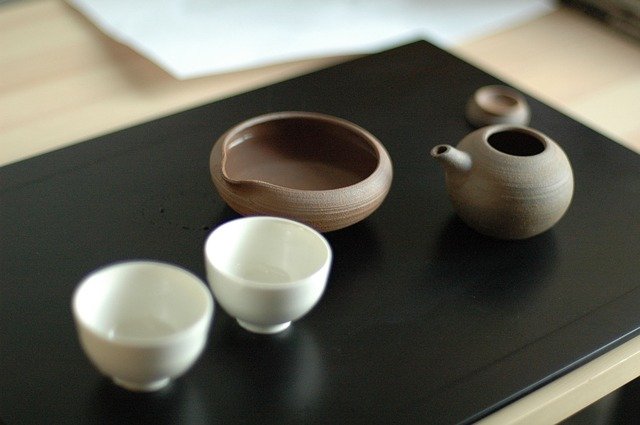
Gyokuro tea is one of those most appreciated teas in Japan. What is it that makes him appreciated in Japan?
Japanese teas are mostly green teas. They are softer and more delicate teas than black teas and are great favorites in Asian countries. Within Japanese teas there is a great variety of classes: Matcha , Gyokuro , Sencha , Gebalong, Genmmaicha, Kokeicha, Kukicha, Sincha, Amacha, etc.
All of them unique and different and most surprisingly, all from the same plant, the Camellia Sinensis.
Gyokuro is a very special and appreciated tea considered a “premium” tea, so its price is higher than the Japanese Sencha or Bancha varieties , but it is certainly worth it for its flavor and aroma.
What is Gyokuro tea?
Gyokuro Green Tea is a tea of Japanese origin, which translates as “jewel dew” (or “dew jade”, referring to the pale green color of the infusion).
What makes Gyokuro a special tea is:
The Asahi, Okumidori, Yamakai, and Saemidori varieties of Camellia Sinensis are used as opposed to the Yabukita variety used mostly for Sencha.
It is grown in the shade rather than in the sun like most other teas. Gyokuro tea leaves are protected from the sun for at least two weeks before they are harvested.
This causes the caffeine and theanine concentration in the leaves to increase, which produces the characteristic sweet taste of Gyokuro.
Gyokuro was first discovered and manufactured in 1835 by Yamamato Kaheide of the Yamamoto Tea Company.
The process of making this tea is an example of the thoroughness and delicacy of Japanese cultivation techniques that I cannot resist telling you about and that more than justifies the price of this tea.
Gyokuro green tea making process
In early April, the first shoots appear. Soon after, the Gyokuro plantation is shaded for about 20 days, using large screens of cane and rice straw.
This serves to keep out direct sunlight and reduce the rate of photosynthesis, leading to high levels of theanine, the amino acid responsible for the rich umami flavors of Gyokuro tea.
In the traditional Japanese calendar, Hachijuhachiya is special because it marks the beginning of the first tea harvest of the year. Although it varies slightly from year to year, hachijuhachiya is in early May.
At that time, the first crop of Gyokuro leaves is carefully harvested. They are young leaves with little lignin and considered by connoisseurs the best leaves for quality, freshness and flavor.
A key difference between Japanese green tea and other brews (black tea, oolong tea, Chinese green tea) is that Japanese tea leaves are steamed after they have been harvested. The vaporization process lasts about 15 – 20 seconds, and is done within 12 – 20 hours from when the leaves are harvested.
The purpose of steaming is to break down the cells of the leaves to release the juices and enzymes in the leaves and subsequently prevent the leaves from browning. Thanks to this vaporization process, and partly in the drying process, the essential nutritional components that provide the characteristic color and fragrance of Gyokuro are fixed.
The drying process is carried out shortly after the steaming of the leaves. During this process, the fibers soften, allowing the components of the tea to be released. Drying is done in stages beginning with a loose rolling and culminating in a tight twist, giving the leaves their characteristic fine needle shape .
The purpose of drying is:
- Reduce excess water in tea leaves
- Kill bacteria and enzymes (especially oxidases)
- inhibit chemical reactions
- Increase fragrance , color and exterior appearance
By the time the leaves have gone through their final drying, the water content has mostly been removed. If you examine the leaves of the Gyokuro closely, you will see that they resemble a finely twisted paper chain , inside the twisted leaves is the essence of the tea. After the drying process, the sheets are graded.
The shoots and stems, as well as scales, that are shed during the drying process are filtered out and only the fine, tightly twisted Gyokuro leaves are used.
Benefits of Gyokuro
The main water-soluble components of Gyokuro are theanine (an amino acid), caffeine, tannins, and vitamin C.
Theanine is the source of tea’s umani flavor, caffeine the source of its bitterness, and tannin the source of its astringency.
The umani taste, also called the fifth taste (sweet, bitter, salty, sour and umani) is that mild, slightly sweet characteristic that is common to Japanese cuisine.
This is the umami that is responsible for Gyokuro‘s smooth full-bodied sweetness.
Why is Gyokuro so rich in teamina?
The answer lies in the cultivation process. Unlike sencha which is grown in full sun, Gyokuro leaves are shaded from the sun for about 20 days just before being picked. During this period, the rate of photosynthesis is significantly reduced.
In addition to the high theanine content, gyokuro also has a relatively high caffeine content. This is because Gyokuro leaves include a large number of young shoots. However, thanks to the calming effect of theanine, the overall effect of caffeine is said to be smoother and more gradual than that of coffee.
All of them cause the Gyokuro to be:
- A powerful antioxidant due to its polyphenol content
- A good diuretic that helps us with fluid retention problems
- It is stimulating, helping us to overcome fatigue and improve our ability to concentrate due to its theine content.
Compared to Sencha, Gyokuro tends to be smoother, fuller-bodied, and less astringent.
How is Gyokuro tea prepared?
Gyokuro is usually prepared differently from other green teas:
Double the amount of tea is usually used than in other teas such as Sencha, that is, about 6 grams per bowl. The recommended temperature is around 50°C – 60°C instead of the 65°C – 75°C that we usually recommend for Sencha.
The infusion time that we recommend is at least 1.5 minutes for the first infusion. It is a tea that allows two or three infusions .
As always, these are simple recommendations since each drinker has their preferences in terms of intensity.
Conclusion

Gyokuro tea, translated as “jewel dew” (or “dew jade”) is one of the most appreciated Japanese green teas for its sweet taste and smooth umami due to the high concentration of theophylline.
It is a tea with a high content of theine and theophylline due to the variety used (Asahi) and the screening process that the buds undergo from their appearance to their harvest.
Its shape is reminiscent of pine leaves since they are thin, elongated and deep green in color compared to the wide leaves of Bancha or the color of Sencha or Kukicha.
Its preparation is very simple, it is enough to infuse for a minute and a half or two minutes about 6 grams (twice the normal amount) of strand at 50-60ºC to obtain an incredible cup of green infusion.
It admits two or three infusions as the same threads.
Without a doubt you should drink it or at least know about it since it is a unique green tea.
